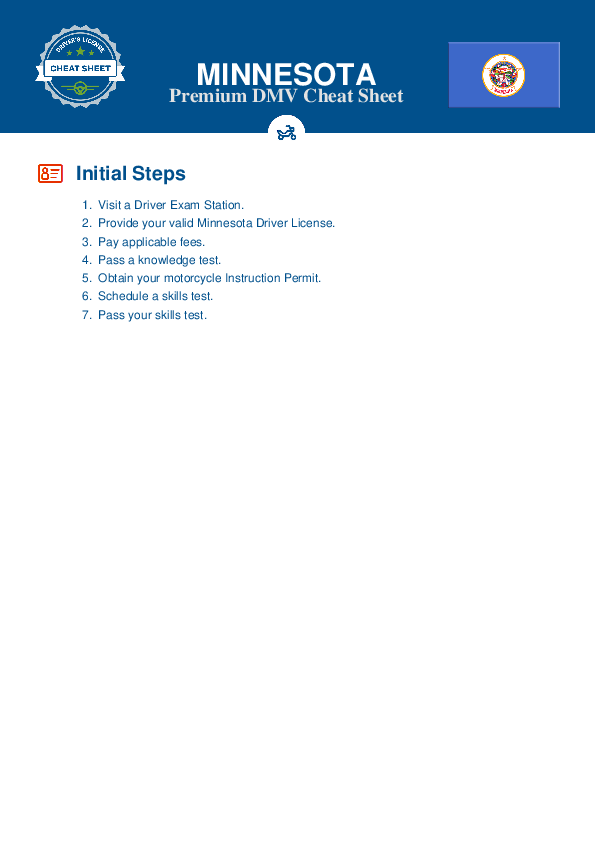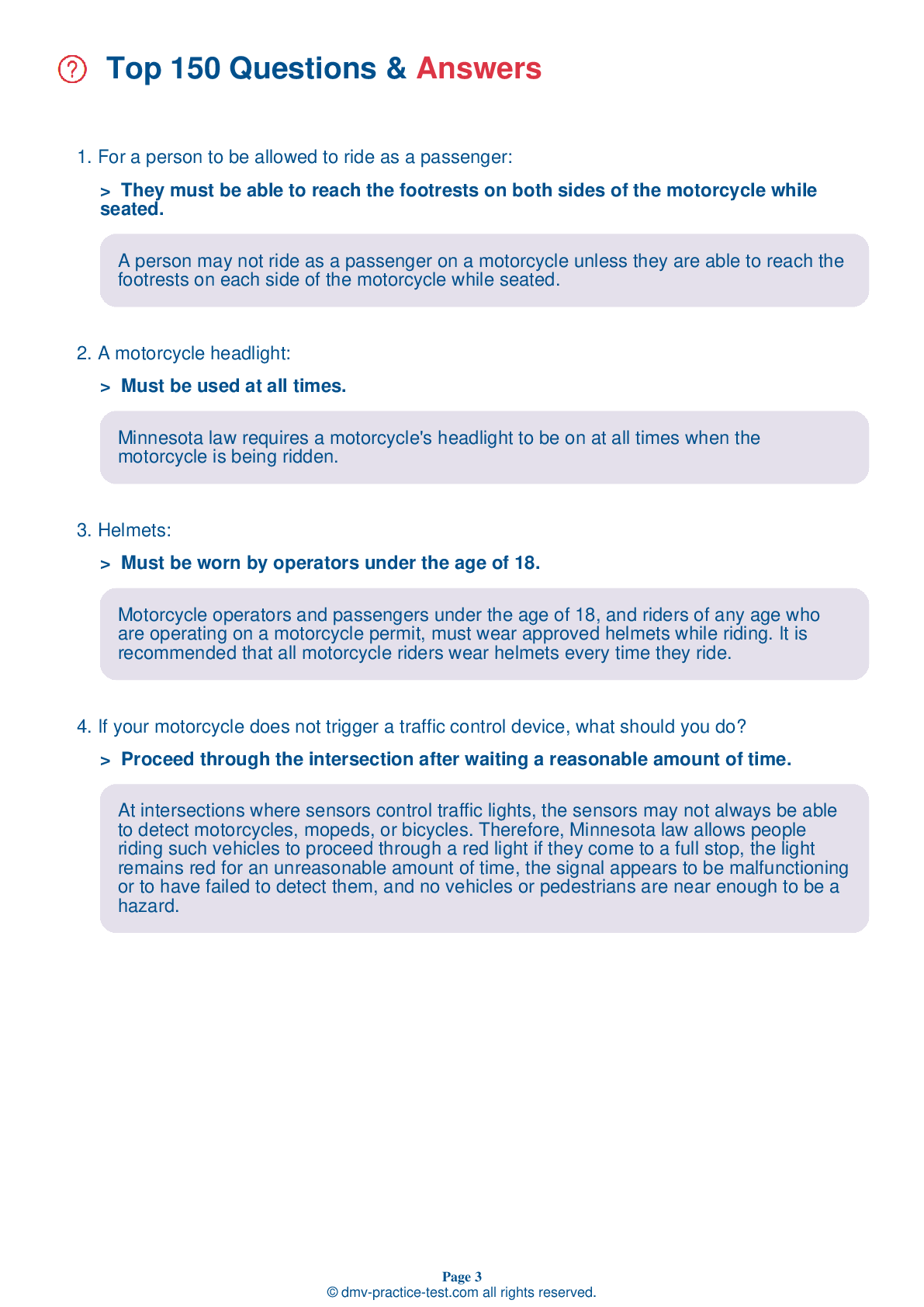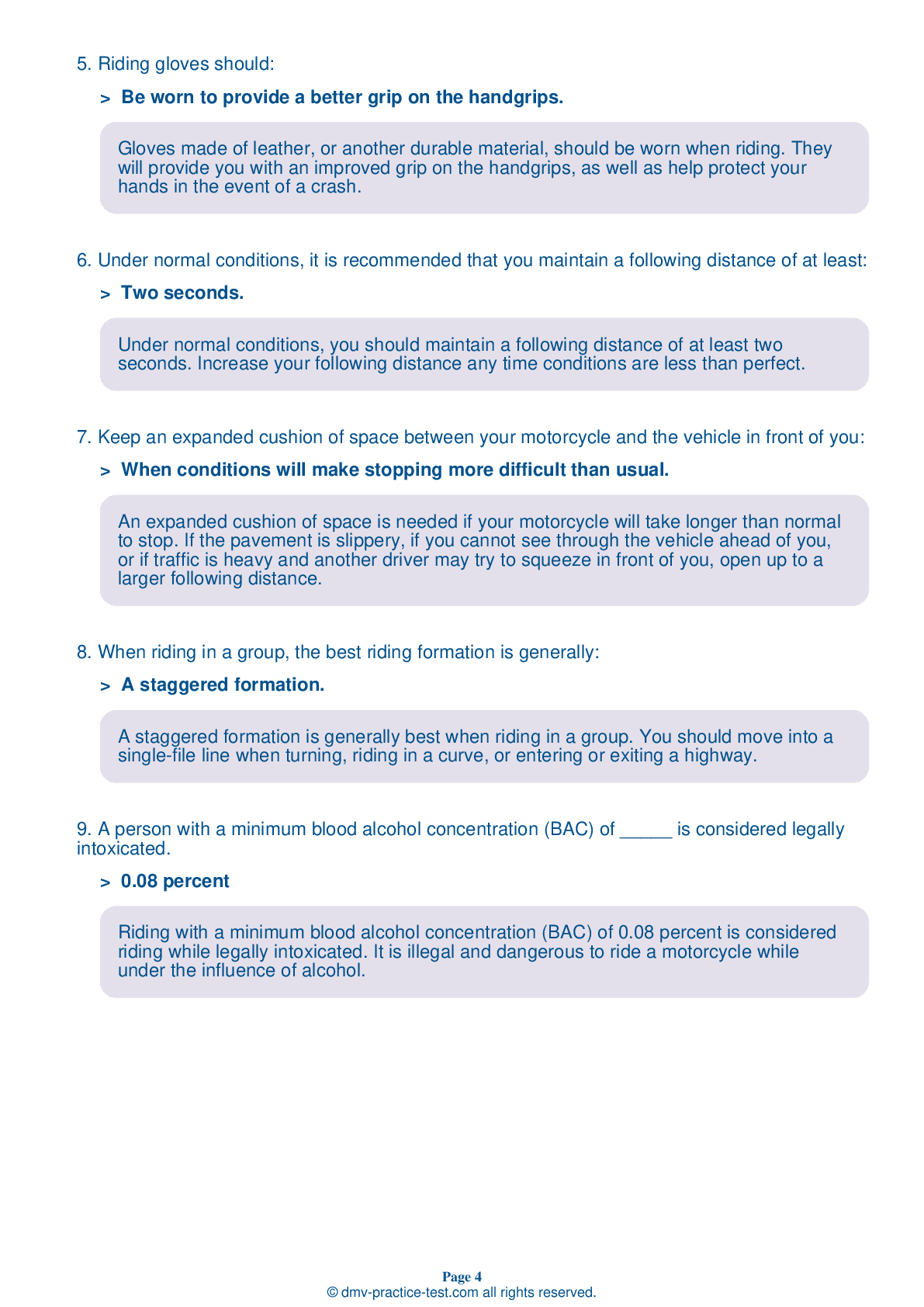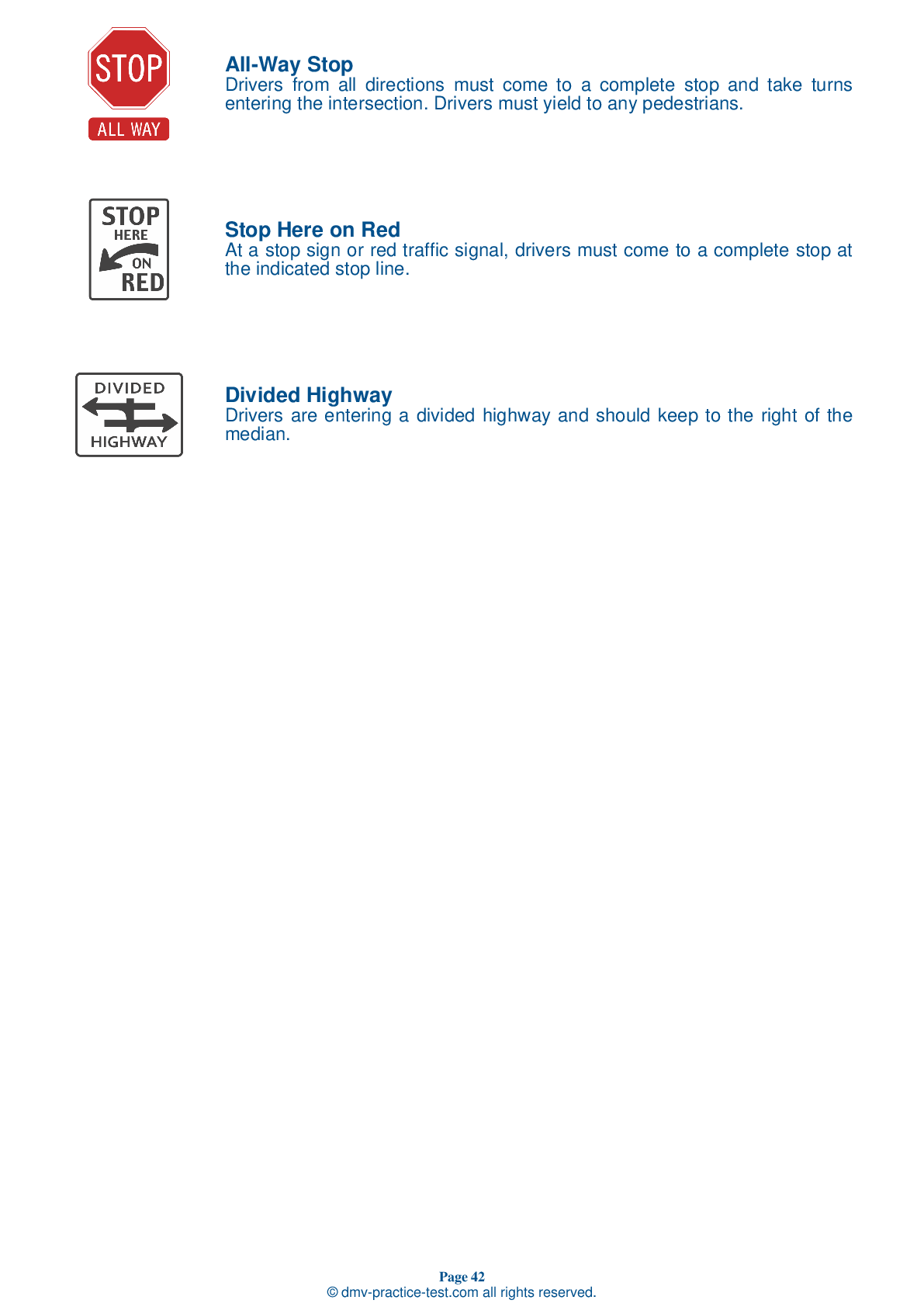Motorcycle Test | License MN 2025 | FREE Online Practice! #1 Page 2 of 5
Take this FREE motorcycle test (license in MN 2025) to check your knowledge of the road rules. To improve your results, download a motorcycle handbook online, study theory, and practice for free on our website. Still worried about how to get a motorcycle license in Minnesota in 2025? Check our website for more sample tests, train as much as possible, and boost your grades!
9 . To lessen your chances of an accident, you should:
To reduce the risk of a crash, you should always ensure that you are visible to others. Communicate your intentions through proper use of your signals, brake light, and lane position. Maintain a space cushion around your motorcycle and consistently scan the road ahead of, behind, and next to your vehicle.
10 . How can you discourage another vehicle from sharing your lane?
To discourage automobile drivers from trying to share your lane, ride in the center portion of the lane.
11 . Which of the following is not considered protective eye wear?
Even if a motorcycle has a windscreen, riders are required to wear protective eyewear, such as appropriate glasses, goggles, or face shields. Contact lenses do not satisfy this requirement.
12 . When riding, you should:
Always look through a turn to where you want to go. Turn only your head to look, not your shoulders, and keep your eyes level with the horizon.
13 . Common drugs, such as cold tablets:
Almost all drugs, including over-the-counter medications, have the potential to impact the abilities you need to ride safely. Make sure you understand the side effects of any drug before combining it with riding.
14 . If you are not traveling slowly enough when shifting into a lower gear, the:
If you are not riding slowly enough when shifting into a lower gear, the motorcycle will lurch and the rear wheel may skid.
15 . This sign means:
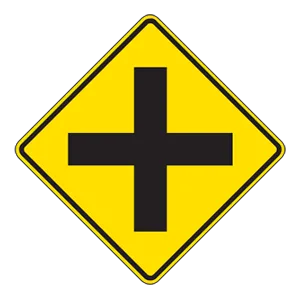
Warning signs prepare drivers for upcoming road conditions and hazards and are usually yellow with black markings. This sign alerts drivers to an upcoming intersection.
16 . When approaching a blind intersection, riders should:
When approaching a blind intersection that is controlled by a stop line or stop sign, you must first stop where indicated. You may then edge forward and stop again just short of where the cross traffic lane meets your lane. From that position, lean your body forward and look around buildings, parked cars, or bushes to see if anything is approaching. Make sure your front wheel stays out of the crossroad while you are looking.
See the exact questions that will be on the 2025 Minnesota DMV exam.
99.2% of people who use the cheat sheet pass the FIRST TIME
Jeneen was tired of paying $5/gallon. She got herself a scooter that required the motorcycle license. She studyed the motorcycle test cheat sheet and passed her test the next day!
Christopher tells us how he knew nothing prior to obtaining the motorcycle study guide, and he only got one question wrong because he clicked on the wrong answer by mistake.
